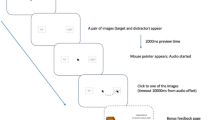Abstract
When you enter in conversation with someone else, waiting for the answer takes a minimal amount of time that if exceeded creates some kind of embarrassment and hindrance. If a third subject is present, she/he will usually intervene either to remove the hindrance, or to solve the embarrassment. But when one subject exceeds systematically the minimal time for answering, she/he is bound to be diagnosed as autistic. Of course, there are other criteria, is not so simple, but if you read novels like Stephen Hero, by Joyce, you can get an idea about what Autism can be conceived from the point of view of literature. In the following work we will read back the main steps that made the autistic guys psychopathologic, with no hope, and the other gaze on Autism, which was always shaped by a kind of admiration in front of a “mysterious” form of existence.
Similar content being viewed by others
Notes
Among them Enrico Valtellina (PhD), Michele Capararo (MD), Conny Russo (PhD), Andrée Bella (PhD), Beatrice Catini (PhD Student), Nadine Tabacchi (Free Lance Philosopher), and other students of psychology at the University of Bergamo.
Babil is a French neologism, we take it from Le Clézio [4].
http://neurodiversity.com/main.html See also [14].
References
Foucault M (1971) L’ordre du discours. Gallimard, Paris
Phillips L, Jørgensen MW (2002) Discourse analysis. Sage, London
Russo C, Capararo M, Valtellina E, a cura di (2013) A sé e agli altri. Storia della manicomializzazione dell’autismo e delle altre disabilità relazionali. Mimesis, Milano
Le Clézio J-M (2009) La tour de Babil. In: Dossier Wolfson ou L’affaire du Schizo et les langues. Gallimard, Paris
Barbetta P (2014) La follia rivisitata. Mimesis, Milano
Kanner L (1943) Autistic disturbances of affective contact. Nerv Child 2:217–250
Asperger H (1991) “Autistic Psychopathy” in childhood. In: Frith U (ed) Autism and Asperger syndrome. Cambridge University Press, New York, pp 37–92
Barbetta P, Bella A, Valtellina E (2014) The complete idiot’s guide to idiocy. Or, what “Oligophrenia” tells us. Trauma Mem 2(2):57–66
Bettelheim B (1967) The empty fortress: infantile autism and the birth of the self. The Free Press, New York
American Psychiatric Association (1952) Diagnostic and statistical manual of mental disorders, 1st edn. Author, Washington, DC
American Psychiatric Association (1968) Diagnostic and statistical manual of mental disorders, 2nd edn. Author, Washington, DC
American Psychiatric Association (1994) Diagnostic and statistical manual of mental disorders, 4th edn. Author, Washington, DC
American Psychiatric Association (2013) Diagnostic and statistical manual of mental disorders, 5th edn. Author, Washington, DC
Ortega F (2012) Il soggetto cerebrale e la sfida della neurodiversità. In: Barbetta P (ed) a cura di, L’avventura delle differenze. Napoli, Liguori
Vidal F (2009) Brainhood, anthropological figure of modernity. Hist Hum Sci 22(1):5–36
Frances A (2014) Saving normal: an insider’s revolt against out-of-control psychiatric diagnosis, DSM-5, big pharma, and the medicalization of ordinary life. William Morrow, New York
Joyce J (1944) Stephen Hero. New Directions, New York
Sacks O (1996) An anthropologist on Mars. Vintage, New York
Nussbaum MC (2009) Frontiers of justice: disability, nationality, species membership. Harvard University Press, Cambridge
Sontag S (2001) Illness as metaphor and AIDS and its metaphors. Picador, New York
Wittgenstein L (1961) Tractatus Logico-Philosophicus. Basic Blackwell, London
Matte Blanco I (1975) The unconscious as infinite sets. Karmac, London
Author information
Authors and Affiliations
Corresponding author
Ethics declarations
Conflict of interest
This is to confirm that in the essay The Autistic Way, written by Pietro Barbetta and Enrico Valtellina, I, Pietro Barbetta, have no conflict of interest of any sort.
Rights and permissions
About this article
Cite this article
Barbetta, P., Valtellina, E. Intuitive pathways of the autistic mind. J Med Pers 13, 169–177 (2015). https://doi.org/10.1007/s12682-015-0214-9
Published:
Issue Date:
DOI: https://doi.org/10.1007/s12682-015-0214-9




